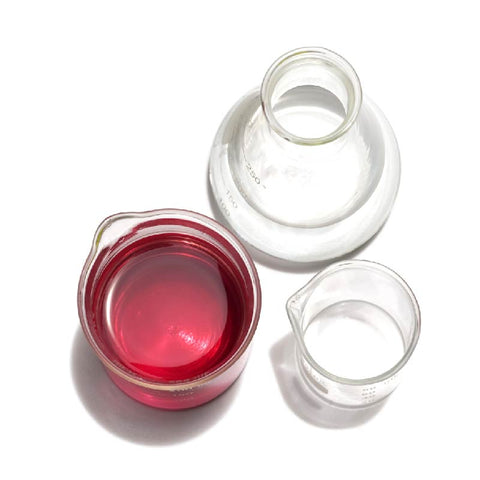
Hydration enhancers boost moisture levels, providing deep hydration for the skin.
A potent skin-soothing agent known for its natural origin in plants like comfrey. Can also be synthetic. With benefits such as irritation relief, enhanced skin healing, and improved moisture retention, Allantoin works its magic by calming inflammation, stimulating cell regeneration, and promoting softness and smoothness in the skin. It is generally safe for topical use.
Becker LC, Bergfeld WF, Belsito DV, et al. Final Report of the Safety Assessment of Allantoin and Its Related Complexes. International Journal of Toxicology. 2010;29(3_suppl):84S-97S. doi:10.1177/1091581810362805
Extracted from the Aloe Barbadensis plant, known for its soothing and moisturizing capabilities. With multiple skin benefits, Aloe Vera's unique blend of bioactive compounds, such as vitamins, minerals, and polysaccharides, work to calm and hydrate the skin. Effectively soothes irritation and retains moisture. Its safety for topical use is widely recognized.
Final Report on the Safety Assessment of Aloe Andongensis Extract, Aloe Andongensis Leaf Juice, Aloe Arborescens Leaf Extract, Aloe Arborescens Leaf Juice, Aloe Arborescens Leaf Protoplasts, Aloe Barbadensis Flower Extract, Aloe Barbadensis Leaf, Aloe Barbadensis Leaf Extract, Aloe Barbadensis Leaf Juice, Aloe Barbadensis Leaf Polysaccharides, Aloe Barbadensis Leaf Water, Aloe Ferox Leaf Extract, Aloe Ferox Leaf Juice, and Aloe Ferox Leaf Juice Extract1. International Journal of Toxicology. 2007;26(2_suppl):1-50. doi:10.1080/10915810701351186
Serves as a solvent, humectant, and conditioning agent. Sourced from lab synthesis, its role as a solvent facilitates the dissolution of other ingredients, improving their efficacy, while its humectant properties attract and retain skin moisture. Butylene Glycol is generally considered suitable for topical use.
Final report on the safety assessment of butylene glycol, hexylene glycol, ethoxydiglycol, and dipropylene glycol. (1985). Journal of the American College of Toxicology, 4(5), 223–248. https://doi.org/10.3109/10915818509078692
A versatile ingredient known for its humectant and moisturizing properties. Derived from plant oils like soybean, coconut, or palm, or produced synthetically, Glycerin has numerous key benefits. It attracts and retains moisture, promoting hydration and enhancing the skin's barrier function. As a humectant, it draws moisture from the environment and deeper skin layers, maintaining optimal hydration levels. Glycerin is generally safe and well-tolerated.
Becker LC, Bergfeld WF, Belsito DV, et al. Safety Assessment of Glycerin as Used in Cosmetics. International Journal of Toxicology. 2019;38(3_suppl):6S-22S. doi:10.1177/1091581819883820
A remarkable skin-conditioning and moisturizing agent. Produced synthetically in the lab, it provides numerous key benefits. This includes intense hydration, improved skin elasticity, a plumping effect, and a reduction in the appearance of fine lines and wrinkles. The science behind this potent ingredient involves its deep penetration into the skin's surface, delivering moisture and enhancing the skin's natural water-binding capabilities, resulting in improved hydration and a smoother complexion. When used topically, Hydrolyzed Glycosaminoglycans are generally safe.
Papakonstantinou E, Roth M, Karakiulakis G. Hyaluronic acid: A key molecule in skin aging. Dermatoendocrinol. 2012 Jul 1;4(3):253-8. doi: 10.4161/derm.21923. PMID: 23467280; PMCID: PMC3583886.
A marine-derived extract, hailing from Laminaria digitata, a unique brown seaweed. Laden with antioxidants, this extract adds enhanced hydration and soothing anti-inflammatory effects, and promotes a calming effect on irritation. The extract is generally deemed safe for topical use.
Reshma BS, Aavula T, Narasimman V, Ramachandran S, Essa MM, Qoronfleh MW. Antioxidant and Antiaging Properties of Agar Obtained from Brown Seaweed Laminaria digitata (Hudson) in D-Galactose-Induced Swiss Albino Mice. Evid Based Complement Alternat Med. 2022 Feb 24;2022:7736378. doi: 10.1155/2022/7736378. PMID: 35251211; PMCID: PMC8894001.
